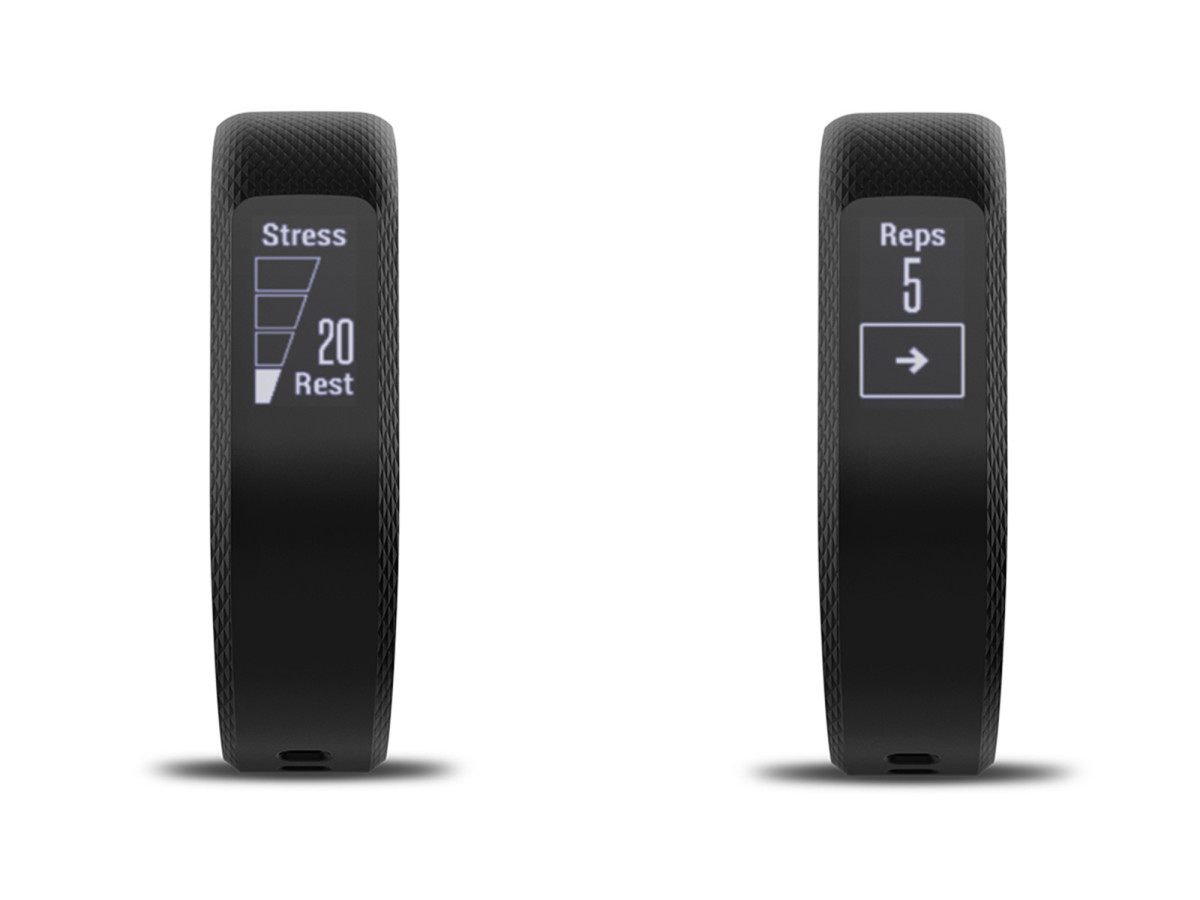Garmin Vivosmart 3 review: Testing out the tracker's stress monitoring, rep counter, more

Garmin's newest fitness tracker, the Vivosmart 3 ($140; amazon.com) is an update to its Vivosmart HR+ fitness tracker that was released a year ago, and as I unboxed the slim tracker, I thought to myself: Maybe this would be the watch that converted me from a workout-only wearer to all-day, everyday tracker of all things health?
Though I religiously wear a heart rate monitor or running watch for early morning gym workouts and long runs on the weekend, I’ve haven’t fully committed to using a daily fitness or activity tracker. Upon opening the Garmin Vivosmart 3, I was pleased that the box itself was not wrapped in frustratingly-hard-to-open plastic and I liked that the tracker inside was lightweight, thin and conformed nicely to my rather tiny wrists.
When athletes beat the odds: These six stars are just getting better age
After popping it onto the charger and connecting to my iPhone 7 via Bluetooth, I downloaded the Garmin connect app where I'd be able to view information on my activities and workouts, health and performance and more. The app is easy to use and once you're able to sync to your watch, everything uploads within minutes and you can change some of the tracker's settings right from the app, which I appreciated. Sometimes swiping up and down on the small screen on the tracker was difficult and I would accidentally select something when I wanted keep scrolling. I found the best way to scroll through was to guide your finger in a longer stroke from the very top, above the screen, down to the very bottom in one motion. Starting the swipe too low sometimes selected when I didn't want to.
Like the Apple Watch, the Garmin Vivosmart 3 allows you to connect to your phone via Bluetooth and receive notifications as you would on your phone screen, such as text messages, emails, app notifications and more. This was helpful for texts, as I am not always looking at my phone during the day, but for other alerts, such as Twitter notifications, that are silent "banner" alerts on my iPhone, the vibration on my wrist was a bit annoying after awhile. These are typically notifications that I glance over on my phone, but I was made to pay attention (or at least lift my wrist to look) from the vibration alert. If there was setting on the tracker to change this, I couldn't find it easily.
In terms of daily fitness tracking (steps, stairs count, heart rate) I thought the Garmin was accurate and I appreciated the "Move" reminder when I had been sitting too long at my desk at work.

For workouts, one of the features I was most interested in was the rep and set count for strength training exercises. My workout routine contains weightlifting movements at least four days out of the week and my standard fitness watch didn't provide anything like this.
In order to start a strength-training workout, you must hold the menu screen until the activity menu pops up. Then, you swipe through to the lifting icon and tap to start. When I started the activity, I was only doing one exercise per set—a barbell row. For this exercise, I was using two hands and I rested in between each 12-rep set, for a total of three sets. In this instance, the counter worked great. It was accurate in counting all 12 reps and when I completed a set, it started a "rest" timer.
However, when I moved into a unilateral exercise, there were some glitches. The watch only counted reps for movements where I was using both hands or arms. Single leg or single arm exercises, such as dumbbell rows or single-leg RDLs, did not register until I used my right hand, which is where I wore the watch.
The stress counter was another solid added feature. The watch tracks your stress levels and at the end of the day you have a picture of how your body manages stress. I found it interesting that for most days during the work week, my stress levels peaked in the morning (on my commute to work), at one point in the afternoon and then again in the evening on my commute home. (Lesson learned: My 90-minute commute each way does take a toll on stress levels and overall health.) In order to combat this stress, the tracker can take you through breathing exercises—deep breaths, hold for four seconds, then exhale.
How to take your workout outdoors: Escape to Sun Valley for a mountain biking adventure
You can wake the Garmin Vivosmart 3 to the home screen when you move your hand in an upward motion, as if you're checking the time, or by double-tapping the screen. The battery life was great—it lasted for a full work week (though I did not sleep with it)—and I charged it up on Sunday evening, even though it still had some power left. (Garmin says the tracker has a 5-day battery life.) It also has a built-in heart rate monitor, but for runners, know that there is not a GPS system in the watch.
Priced at $86.99, the Garmin Vivosmart 3 is in an affordable range, matches up well in price and functionality to competitors, such as the FitBit Charge 2, and is one step down from the $180 Garmin Vivosmart HR+, which includes GPS tracking. Overall, if you’re looking to gather information on your daily activity, stress levels and health, but also the ability to log strength training and other workouts, I'd definitely recommend this fitness tracker. It’s a budget-friendly option that focuses on total wellness, but still provides standard fitness and activity tracking, sleep monitoring, 24/7 heart rate monitoring and more.
